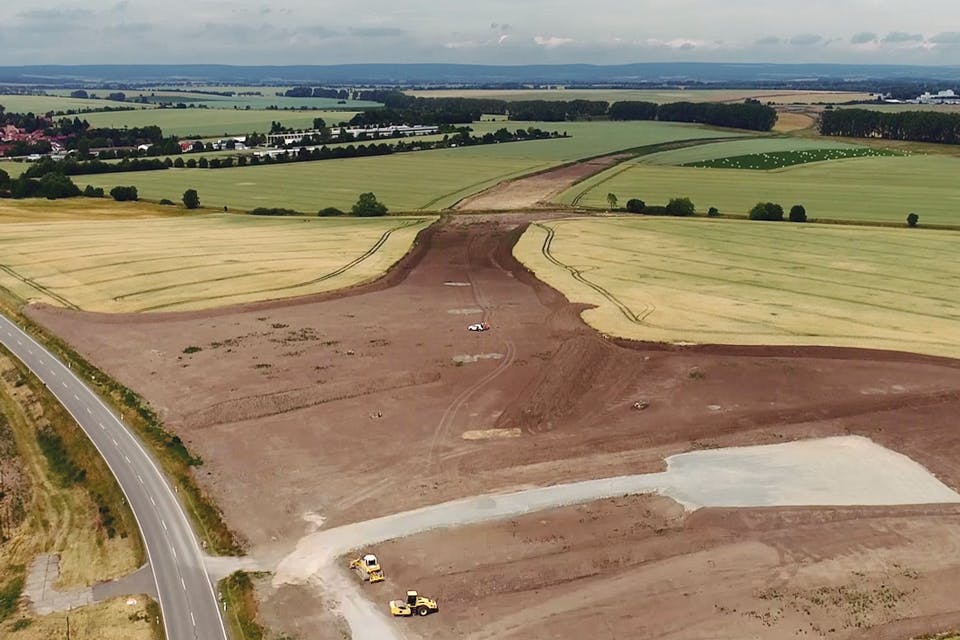
Benin: Route des Pêches
_ In its long-standing roadworks business in Africa,
Sogea-Satom was principally active in Cameroon (106km of the Olama–Bingambo road, including the construction of 81km of unsealed track and 13km of urban roads), Benin (phase 2 of the Route des Pêches) and Niger (upgrade of an 83km section of the Dosso–Bella road). In water works, the company won a contract in Uganda with the Major Projects Division for the construction of drinking water supply infrastructure in the Mbarara district (water intake on the Kagera river, drinking water treatment plant, booster station and 62km of pipes). In Congo, it laid or replaced nearly 1,000km of pipes to supply drinking water to people living in the outlying areas of the capital, Brazzaville. In other markets, there was brisk activity in construction in Morocco (Borj Attijari tower in Casablanca and Mohammed VI Polytechnic University campus in Rabat), and in civil engineering in Benin (second Womey bridge) and Burkina Faso (new Ouagadougou-Donsin airport).

Germany: widening the B247 federal road in northern Thuringia
_ In Germany, the year started off with local companies partnering with the Major Projects Division on the new B247 federal road. This project, which is overseen by VINCI Highways (VINCI Concessions), will provide work for the next four years. Other large projects included replacement of the Tegeler bridge in Berlin, runway expansion and roadworks at Düsseldorf airport, construction of an overpass over the A7 motorway and installation of noise barriers on a 73km section of the 46/2 motorway. Regarding innovation technologies for sustainable mobility, Eurovia GmbH in partnership with ElectReon developed a second inductive charging road project on a motorway in Bavaria. In road materials, the company tested low-temperature asphalt mixes (30°C cooler than traditional mixes) on a 2.4km section of the L1141 road. It also tested the new Lumivia® luminescent asphalt mix, in which some of the aggregate is replaced by recycled mirror fragments that produce a luminescent effect, thus making it possible to reduce roadside lighting at night.
